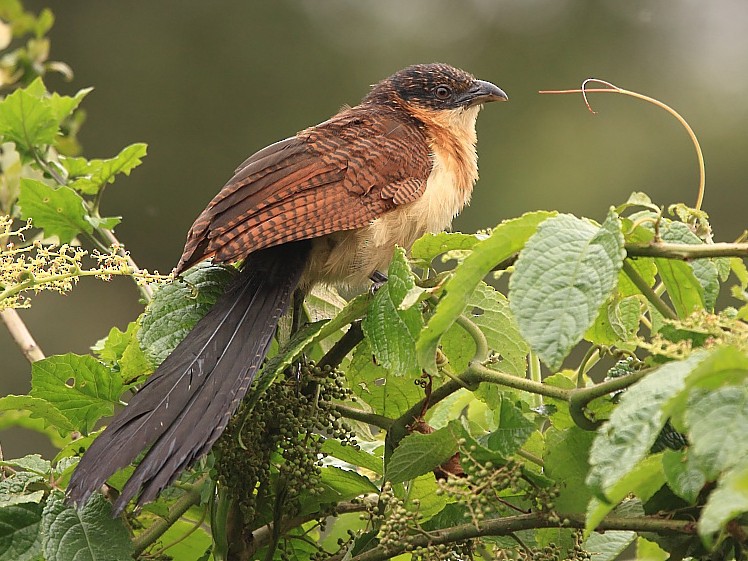Bird Watching in Rwenzori Mountains National Park : The park has been home to 217 different species. The park has 18 Albertine endemics, which is second only to Bwindi Impenetrable National Park in Uganda, which has 24. Furthermore, the park has 60 of the 86 afro tropical highland biome species, ranking second only to Bwindi Impenetrable.
They include the Rwenzori Turaco, Bamboo Warbler, Golden-winged Sunbird, Scarlet-tufted Malachite Sunbird, and Stuhlmann’s Double-collared Olive-back. The Guinea-Congo Forest Biome has 17 species; however, they are all widely represented in other locations.
A Brief Background on Rwenzori Mountains National Park.
The Rwenzori Mountains stretch for around 120 kilometers and are 65 kilometers wide. Mount Stanley (5,109m), Mount Speke (4,890m), Mount Baker (4,843m), Mount Emin (4,798m), Mount Gessi (4,715m), and Mount Luigi di Savoia (4,627m) are the six peaks. Mount Stanley has numerous minor peaks, the highest of which is Margherita.
The Rwenzori Mountains in Uganda are an ideal place for hiking and mountaineering. A 7- to 12-day tour will get both expert and novice hikers to the peak and out of the park. Nature walks via Bakonzo Village, farmhouse visits, cultural performances, and other traditional activities, as well as the 2 to 3-day 28km Mahoma Nature path, are available for shorter and less strenuous treks.
What Bird species can be found in Rwenzori Mountains National Park?
Besides hiking the beautiful Rwenzori Mountains, bird watching is one of the top activities done in the park. Among some of the bird species sighted in the park include;
- Great Blue Turaco
- African Black Duck
- Latham’s Francolin
- Red-winged Francolin
- Scaly Spur fowl
- Handsome Spur fowl
- Great Crested Grebe
- Little Grebe
- Rameron Pigeon
- Red-eyed Dove
- Laughing Dove
- White-napped Pigeon
- Rameron Pigeon
- African Green-Pigeon
- Speckled Pigeon
- Tambourine Dove
- Black-billed Turaco
- Levaillant’s Cuckoo
- Blue-headed Coucal
- Klaas’s Cuckoo
- Ross’s Turaco
- Eastern Plantain-eater
- Dideric Cuckoo
- Montane Nightjar
- Scarce Swift
- White-rumped Swift
- White-spotted Fluff tail
- Red-knobbed Coot
- Common Sandpiper
- Little Egret
- Black-headed Heron
- Hadada Ibis
- Black-winged Kite
- Brown Snake Eagle
- Speckled Mousebird
What to carry for your bird watching safari in Rwenzori Mountains National Park?
It is recommended that you bring the following items with you on your birding safari in Uganda: binoculars, a map of the area, sunscreen lotion, sun glasses, long-sleeved pants and shirts, plenty of drinking water, and other necessities.

When is the best time for bird watching in Rwenzori Mountains National Park?
Though bird watching may be done all year, the weather might be a barrier for some birders. The dry season in most parks, which runs from January to February and June to August, is ideal for bird watching. Trekking might be simple because the paths are dry and non-slip. You’ll also get plenty of time for bird watching. However, others would argue that the best period is between late May and September, when there is less rain and more food available.
From November to April, migrating birds can be seen in parks. Birding is best done in the early morning, when many bird species are easily visible. The parks are often packed during the peak season, which runs from June to September.
In addition to the various birdwatching species found in Uganda, the nation provides a variety of other exciting activities such as mountain gorilla trekking, chimpanzee trekking, mountain climbing, cultural discovery, cycling, white water rafting, bungee jumping, and many more. These are generally included on the Uganda birding safari schedule without interfering with bird sightings.
In conclusion; Some birds can only be found in specific places; nevertheless, Uganda is endowed with several birding spots where bird enthusiasts may enjoy a birding excursion while looking for these magnificent species. An experienced bird watcher may recognize over 100 different species in a single day. Starting early provides the best chance of discovering rare, attractive wildlife.


